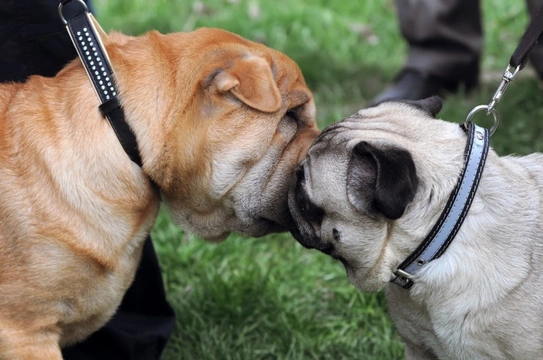
How do dogs recognise other individual dogs?
Dogs are highly social as a species, and not only do dogs actively seek out the company of other dogs, but they don’t thrive if they aren’t able to socialise and play regularly with others. Whilst some dogs are more outgoing than others when it comes to making new friends and interacting with strange dogs, contact with other dogs is an important part of canine life, and this is something that all dog owners should seek to enable.
If your regularly walk your dog in the same places at the same times of day, you will probably find that you’ll keep running into the same dogs regularly, and your dog will begin to make firm friends and form familiar bonds with the dogs that they enjoy playing with. You’ll already know this if your dog has a favourite friend in the dog park and always gets really excited and pulls on the lead when they spot them – but have you ever wondered how dogs recognise other individual dogs, and how long it takes for a dog to build up personal memories of their friends?
In this article we will explain how dogs recognise other specific dogs, and outline the basics of what makes dogs memorable to each other. Read on to learn more.
Scent-based memories
The dog’s most powerful and most utilised sense is their sense of smell, and not only can dogs pick up a huge and diverse range of scents and identify even faint scents some distance away, but they also have huge memory banks of scent-based memories to refer back to as well.
Every single dog has their own unique scent, which allows other dogs to pick them out from a crowd, and this is true even for dogs that live together and are fed the same foods and visit the same areas. Dogs communicate and greet each other by sniffing and use this information to build up a picture of the other party, which triggers their memories and associations at future meetings too.
Visual recognition
Scent may be the dog’s strongest sense, but it is not the only way that dog recognise each other. Dogs are also capable of recognising each other based on sight alone – and whilst three yellow Labrador retrievers that you don’t know well might potentially be hard to tell apart to us as humans, they will be easily identifiable to your dog, even if they have only met once.
If your dog spots a friend off in the distance and shows signs of instant recognition, this may be visual recognition if the other dog is too far away to scent – or a combination of visual and scent-based memory.
Similarities and close associations
Some people’s dogs tend to get on well with most others but have a specific type of dog that they dislike or are wary of – such as dogs of a certain breed or colour. This often happens if the dog has had a previous bad experience with a similar dog, and so they build up associations between that and other dogs that share similar traits, causing wariness of dogs that are too similar.
Additionally, if your dog is usually fine with others but will sometimes react badly to a random dog for no obvious reason, regardless of their appearance, the scent of the other dog might remind your dog of a different one. Alternatively, the bad reaction might be based solely on the current interaction, if the other dog does something or displays body language that confuses or scares your dog, even if we as humans cannot pick up on the subtle nature of the interaction.
When it comes to budding friendships, dogs are rather less likely to associate a similar-looking dog with the positive traits of a friend, but because social dogs connect, communicate and start to interact quickly, dogs will often get straight down to play with a new friend simply based on the first few seconds of their interaction.
Dogs may even be able to recognise pictures of other dogs
Some limited research even indicates that dogs can recognise pictures of other dogs that they know, which would appear to confirm the idea that dogs can recognise each other based on purely visual memories – but this hasn’t been studied in enough detail to prove a definitive correlation.
How many meetings does it take for one dog to recognise another?
How quickly a dog builds up memories of another dog and how long they retain them for depends on a variety of factors. Strong emotions such as enjoyment, fear or aggression help to cement memories, allowing them to form faster and remain in the dog’s mind for longer than interactions that are not notable to the dog.
The frequency of exposure to another specific dog is another factor, as is the length of time between meetings.
If your dog seems to have a best friend, this is a relationship that has probably developed over time and a series of positive meetings – and this is something that can be very rewarding for both dogs involved.



